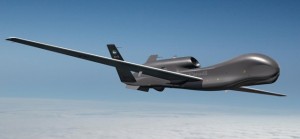In a recent lecture on the ethical implications of military robots, noted author Dr. P.W. Singer observed that we’re only in the infancy of robotic technology. Though the U.S. military began the Iraq war with just a handful of unmanned aerial vehicles (UAVs) and no ground systems, and now has over 7,000 UAVs and 12,000 UGVs, “these are just the first generation. They are the Wright Brothers’ flyers. They are the Model T Fords compared to what’s coming,” he said.
So perhaps it’s just as well that the Canadian Forces has been slow to move forward with the procurement of its Joint Unmanned Surveillance Target Acquisition System (JUSTAS) program, a fleet of medium to high altitude unmanned aerial vehicles.
While procurement programs like fixed-wing search and rescue aircraft, maritime helicopter replacement and up-armoured logistics trucks have been heavily criticized for lengthy delays, JUSTAS has received only nominal attention.
Not that the ISR (intelligence, surveillance and reconnaissance) capability isn’t a high priority. Missions in Afghanistan, Libya, Haiti, and even natural disasters like floods in Manitoba, have shown the CF what can be accomplished when it does and does not have persistent eyes on its objective. “It’s become an asset without which people do not want to operate,” Col Alain Pelletier, director of Air Requirements, recently told the annual conference of Unmanned Systems Canada (USC).
But both the current and former commanders of the Royal Canadian Air Force (RCAF) have said in recent interviews that delays may have helped the cause. “Sometimes the longer you wait, the better off you are because technology moves so fast that you get a different option,” said LGen (Ret’d) Andre Deschamps.
However, although the CF has managed to deliver ISR in recent operations from a variety of contracted solutions – including UAVs from the decks of HMCS Charlottetown and Regina during NATO operations in the Mediterranean and the Gulf of Aden – and manned aircraft such as the CP-140 Aurora, 2013 should see the Forces move into the acquisition phase of a project that began in 2005.
JUSTAS will be an RCAF-managed program. The army is pursuing a family of unmanned systems, including small and micro aerial systems, while the navy is still evaluating UAVs; at present it does not have a procurement project underway.
Earned experience
Spurred by the need for better ISR data in Afghanistan, the Canadian Forces has accumulated a lengthy history with UAVs in operations. Beginning with the Sagem-built Sperwer and the Elbit Systems Skylark, and more recently two contracted solutions, the Israel Aerospace Industries Heron and the Insitu ScanEagle, both the army and the air force have gathered significant experience.
“We learned what works and what doesn’t work,” BGen Derek Joyce, military advisor to the National Security Advisor and a former commanding officer of Task Force Libeccio, the air component of Operation Mobile in Lybia, told the USC event. “We will translate that to the future JUSTAS program.”
Just what JUSTAS is, though, remains unclear. The RCAF is nearing the end of its options analysis phase and remains open to the option of something between a medium altitude, long endurance (MALE) aircraft and a high altitude (HALE) drone – it’s even contemplated a mixed fleet.
The ongoing deliberations are hardly surprising. The UAS will serve as the eyes and ears for Canadian Joint Operations Command both at home and abroad. On the domestic front, the CF will need a platform to provide maritime domain awareness in all weather conditions, provide surveillance in the Arctic – with all the limitations of satellite communications north of 65 degrees – assist with search and rescue, and deliver oversight during responses to natural disasters and security-related events. On expeditionary operations, it will be a critical ISR enabler, providing not only pattern of life intelligence but also target acquisition. As such it will require precision strike capability.
Joyce said the platform would be part of a layered “system of systems,” enhancing satellite coverage and manned aircraft. Pelletier noted, though, that persistent ISR in Libya has helped improve decision-making for fighter pilots and reduced collateral damage.
Considerable attention, of course, has been placed on the challenges of integrating UAVs into civil airspace and addressing safety issues and privacy concerns. Rather than creating new rules, Joyce said the CF would expect to operate under the same regulatory regime as manned aircraft. And a weaponized UAV would be subject to the same rules of engagement as an F-18. “There would always be a person in control,” he said.
The larger challenge, Joyce said, is the data: “The information is useless unless it’s being processed,” and that might have implications in other areas of the CF as these new dedicated Canadian birds being to take flight.
